When I purchased the project in summer 2004 it was near Enid, Oklahoma in storage.
The fuselage had been modified by a prior owner, and I had Ron Decker in Oklahoma restore the fuselage sheet metal back to original configuration. Here is the fuselage, with modified nose, when I purchased it:
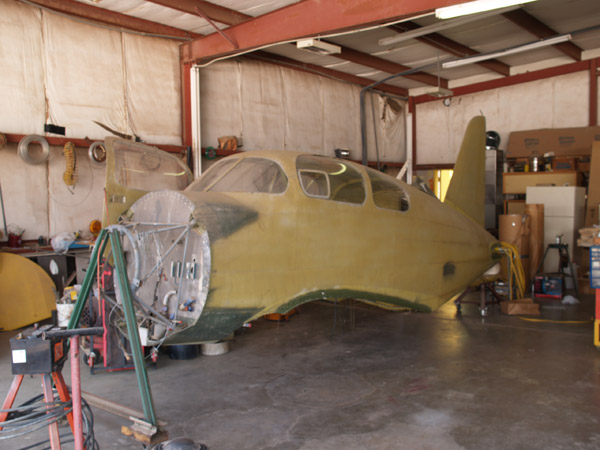
Notice the all aluminum monocoque fuselage construction, which was fairly advanced for a general aviation aircraft at the time. The fuselage is also a cigar shape that tapers in two dimensions, or has a compound curve. The Harlow has a one-piece wing which fits into the rounded slot under the fuselage.
One interesting characteristic of the Harlow is that it was optimized to reduce tooling. Normally on a fuselage of this type the outer skins, which are thin sheets of aluminum, would have to be shaped and stretched to assume the "bowl" shape needed to create a compound curve. To perform this stretch some relatively expensive tooling is required. Harlow optimized for reduced tooling with higher labor by using smaller strips of metal cut into long and slightly tapering rhomboid shapes, which is labor intensive to rivet together but allows a compound curve skin to be build from flat strips of sheet metal. Here's a closeup on the fuselage showing the strips - notice the closely spaced rivet lines running along the long axis of the fuselage.
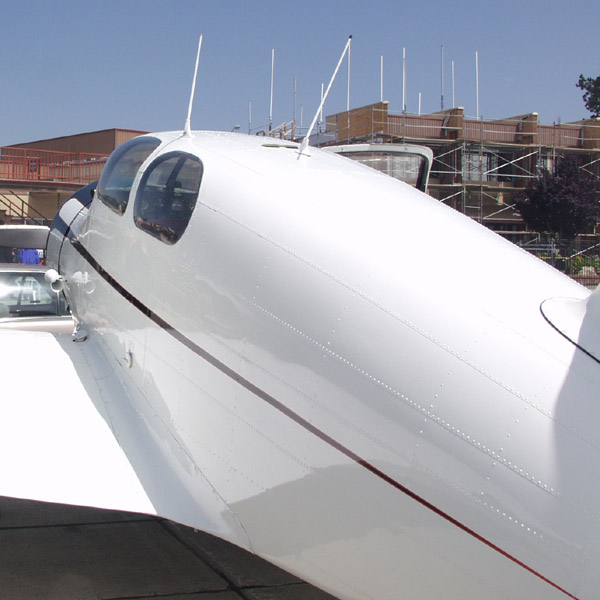
Here is the wing on my project. The wing is one piece and this is a view of the center section, with the landing gear folded up. When assembled the folded up tires are located directly under the pilot's feet when in flight. The rails on top of the wing are where the pilot's seat attaches.
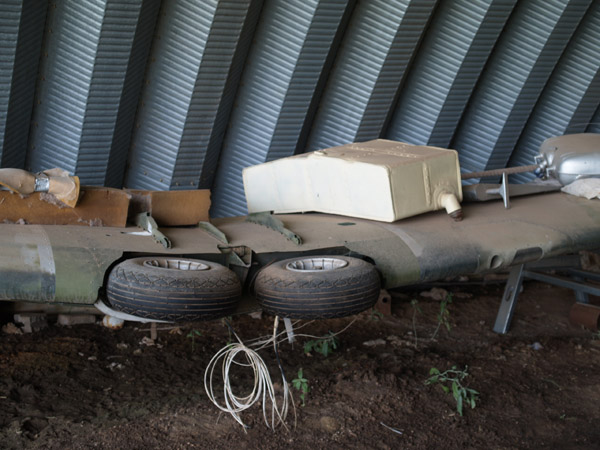
Here's a view down the inside of the tailcone, looking towards the tail. The aircraft is in good shape, with very light surface corrosion in places but nothing severe enough to warrant skin replacement. You can see some old mud-dauber nests built in the fuselage due to long time storage without flying. During restoration and reassembly I will probably strip and re-spray the zinc-chromate primer with a more modern epoxy based primer for enhanced corrosion protection.
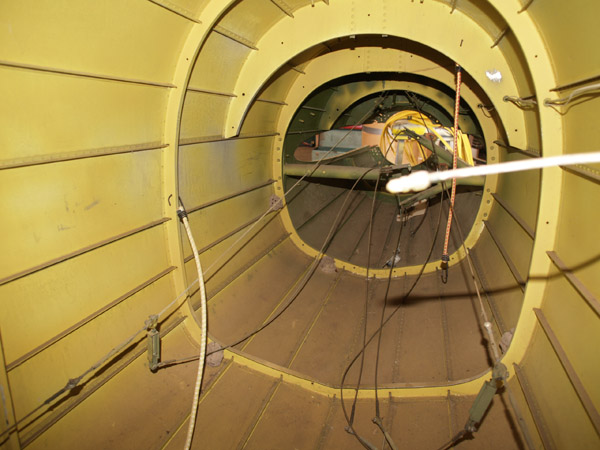
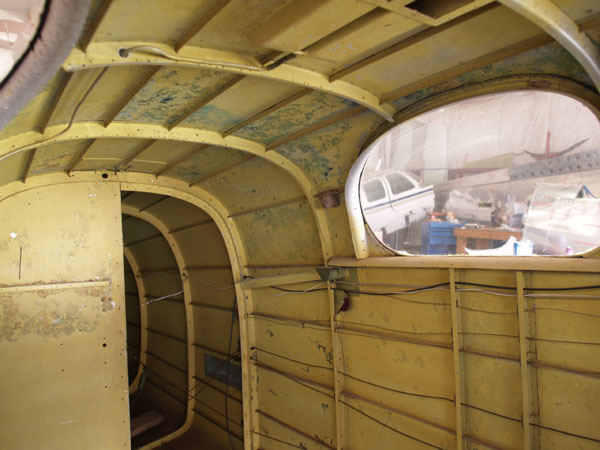
The instrument panel is non-original and needs work. Notice that the cabin "floor" is open and missing. This is where the wing mates to the fuselage and the top of the wing center section serves as the cabin floor.
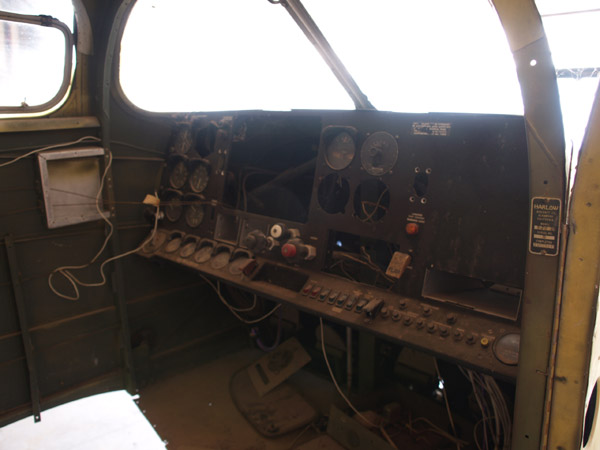
The project came with a cowling spinning, and an original Warner 145 engine. I do not plan to use the engine, as I will use a slightly more powerful and easier to operate Warner 165, but I will use the spinning to build a cowling. The complete cowling in the background is Joe's finished cowling for his project.
